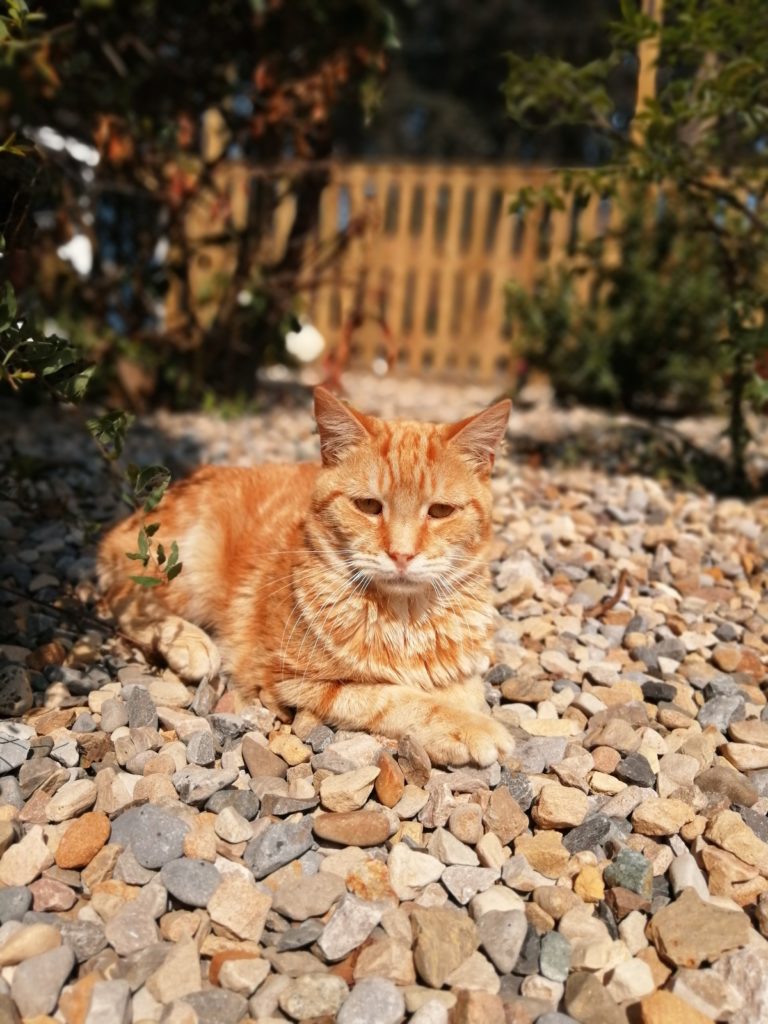Introducing your new cat to other cats
It does not have to be difficult to introduce another cat to your resident cat.
The best technique we have found and recommend is to confine the new cat in a single room initially and introduce the resident cat to the newcomer gradually. This single room should be an area where your resident cat doesn’t spend much time. The new cat should be settled into the room with all the necessary resources like food, water, comfortable resting areas and a litter tray.

Keeping the new cat in this room for several days will not only allow it to settle into its new surroundings more easily but will also give you the chance to introduce the scent of the existing cat to the new cat and vice versa before they come face to face. This is essential as scent is the most important aspect of group recognition in cats. To do this you can start by swapping over the cats’ bedding and toys. Another way of creating this communal scent is by utilising the glands around the cats’ heads that secrete a pheromone
that signals a positive message of security and familiarity. The new cat’s scent can be collected and deposited in areas where the existing cat is housed and vice versa. Scent collection is fairly straightforward using fine cotton gloves or a small natural fibre cloth. Stroke the cat around the cheeks, chin and forehead using the cloth or glove. This will collect small amounts of the naturally secreted pheromones from the glands in its face. This cloth can then be rubbed against doorways and furniture to enable both cats to explore the scent of the other without direct contact. Stroking both cats, one after the other, will also aid in the process of creating a communal, familiar smell.
The next stage is to introduce the cats visually, but at a distance to begin with, for example with each cat at opposite ends of a long corridor. Giving each a bowl of food or a toy to play with may distract them but, initially they may be more focused on observing the stranger. To increase the duration of the visual contact you can give each cat a fuss but you need to ensure that the cats are relaxed. If at any point either cat looks anxious, for example, tensing or flattening ears, then they need to be separated and the process repeated again at a later time, possibly with the cats at a greater distance from each other. Owners should gradually increase the length of time the two cats are in visual contact until they no longer need to be separated. Continuing to swap scent all the way through this programme will help the cats identify each other as familiar although they may never be accepted as members of the same social group.
Not all cats will become the best of friends after following this programme but they will hopefully learn to accept each other and not feel threatened or stressed in each other’s presence.
Advice to reduce the incidence of social conflict includes:
- Do not add cats to a stable social group. Avoid extreme characters, e.g., extremely nervous or confident, when adding to an existing group.
- Keep the appropriate number of cats to suit the environment.Avoid multiple cats in a household in densely cat-populated areas.
- Provide dry food for ‘grazing’ throughout the day or divide wet food into several smaller meals to avoid competition at set mealtimes. Designate several areas within the home as feeding stations to avoid bullying.
- Water is an important resource to cats and several bowls throughout the home will potentially encourage them to visit more frequently. Cats find water more attractive if it is located away from food.
- Provide high resting places, beds and private areas in sufficient numbers.
- Provide scratching posts located near entrances, beds and feeding stations to ensure an appropriate surface is available in areas of potential competition.
- Provide indoor litter facilities, even if the cats have access outside. Providing one tray per cat plus one extra in different locations’ indoors is the appropriate formula if there is a pre-existing soiling problem in the household or a cat has a history of urinary tract disease.
- Provide two separate entry and exit points to the property, ie, cat flaps, doors or windows, to avoid the risk of guarding or blocking and enable even the most timid cat to get indoors/outdoors unhindered.
- Provide all resources (food, water, litter trays, beds, toys, scratching posts, high perches and private places) in the formula ‘one per cat plus one extra, positioned in different locations’ to limit competition.
